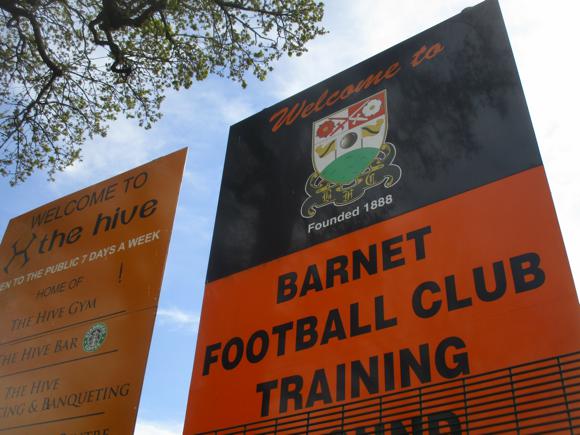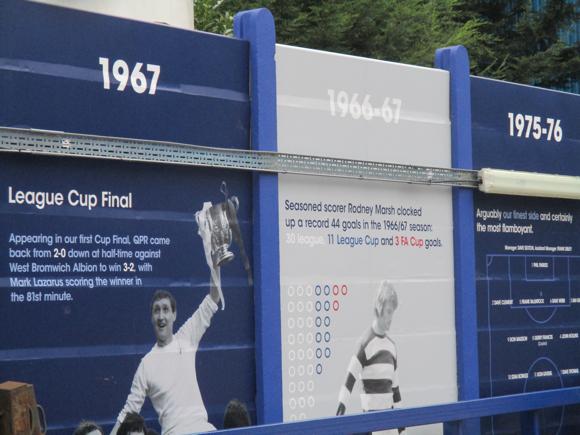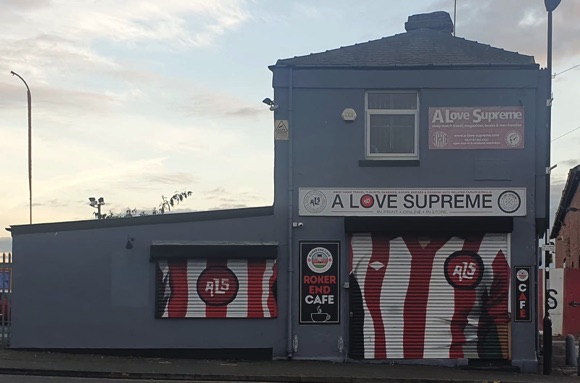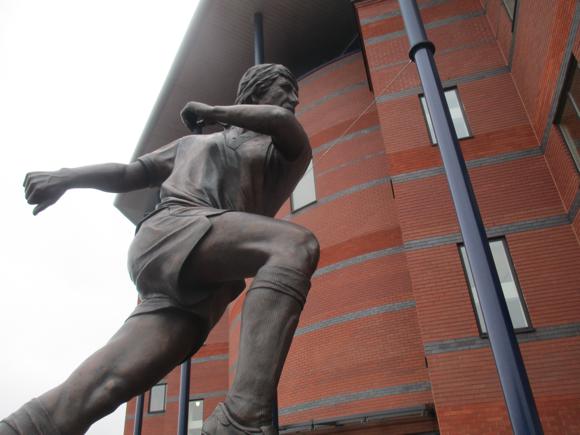A fan’s guide – the club from early doors to today
Who would have thought, as the then Wimbledon FC strode out for the first time in Milton Keynes in 2003, that within a decade the MK Dons would be a healthy concern, playing in front of regular near five-figure crowds, in a new stadium proposed as a World Cup venue?
Probably not Pete Winkelman. It was this locally based music producer who had been behind moving the ailing Wimbledon FC from their century-old south-west London to a much-maligned New Town 60 miles away.

He was backed by two retail giants, integral to a plan to create a business park in the Denbigh area of Milton Keynes. The centrepiece would be a top-level football stadium, as envisaged by the local development corporation back in the 1960s. What the New Town lacked, with non-league works team Milton Keynes City playing in front of three-figure crowds (before folding in 2003), was a top-level football team.
Enter Winkelman. Despite severe condemnation from the football world, and not least from Wimbledon’s original fans who formed the breakaway AFC Wimbledon in 2002, he kept the displaced club afloat.
Having groundshared Selhurst Park with Crystal Palace since 1991, the FA Cup winners of 1988 were already nomadic. Now they were broke and about to go out of business. After Wimbledon went into administration in June 2003, Winkelman took the huge gamble of covering costs and salaries that summer, putting out a weakened but full side for the new season that August. He also funded the conversion of the Milton Keynes National Hockey Stadium for second-flight football.

A month into 2003-04, with debts of almost £30 million, record low gates and eight successive defeats, the Dons moved out of Selhurst Park to a new career in a New Town.
Returning Wimbledon striker Dean Holdsworth saved that particular day, a 2-2 draw with Burnley. The Dons wouldn’t win a match until late October and were duly relegated, 22 points from safety.
At the end of 2003-04, Winkelman’s Inter MK Group managed to buy the club out of administration. Wimbledon became MK Dons, with a suitably functionalist logo and new white shirts with a red trim.
The Dons would have fallen straight down another division in 2004-05 had a points penalty not been imposed on Wrexham – there was no such safety net in 2005-06.

Left a consistent side under Martin Allen, former England international Paul Ince came in to steer the MK Dons to the Football League Trophy – won at Wembley over Grimsby in front of 56,600 – and the League Two championship in 2007-08. As importantly, the Dons had moved out of the National Hockey Stadium and were now playing at their own Stadium MK, as envisioned by the city planners and created by Pete Winkelman’s consortium. Opened by the Queen in November 2007, it had already been hosting matches for four months.
By the time Ince briefly returned in 2009, Roberto Di Matteo had taken the Dons to within two points – and a play-off penalty shoot-out – of the Championship.
Ince’s replacement in May 2010 was his former assistant, 29-year-old Karl Robinson. It would prove a wise hire. Taking the Dons to two consecutive (if losing) play-offs, Robinson also masterminded the memorable cup run of 2012-13. A satisfying 2-1 win over a revengeful AFC Wimbledon, settled on a stoppage-time backflick (‘the Heel of God’) by Jon Otsemobor, was followed by wins over Sheffield Wednesday and QPR. Barnsley barred the way to the quarter-finals.

By now players were coming through MK’s youth academy and Robinson was making astute signings. Loanees Benik Afobe and Will Grigg scored two each as the Dons tonked Manchester United 4-0 in the League Cup in August 2014.
That same season, in front of a record crowd of nearly 27,000, the Dons simply destroyed Manchester United 4-0 in the League Cup, 18-year-old MK academy graduate Dele Alli outstanding. The Dons duly put an end to ten years of scorn and ridicule by gaining a first-ever promotion to the Championship, notching 101 goals in the process.
With Grigg, Afobe and a precocious Dele Alli all gone, Robinson and stalwart captain Dean Lewington, a Don since 2002, battled to maintain second-flight status. As Alli was making his sensational debut for England, his former employers were way out of their depth and made a quick return to the third tier.
Attracting decent crowds for grudge matches with AFC Wimbledon, MK Dons then let a losing run in April 2018 drag them down to League Two, quickly bouncing back to revive the rivalry. Two decades after he formed the Inter MK Group, Winkelman still holds the reins at the MK Stadium, as he approaches retirement age.




Ground Guide
The field of dreams – and the stands around it




Never stretched to its 30,500 capacity, the sleek Stadium MK is a long-planned for resource that puts the New Town of Milton Keynes on the international sporting map.
Created by Pete Winkelman’s Inter MK Group, long backed by large retail firms eager on creating a shopping-and-leisure area in Denbigh – nearer to Fenny Stratford and Bletchley than central Milton Keynes – the stadium was being developed as the newly renamed Milton Keynes Dons played at the National Hockey Arena from 2004-05 onwards.
Created by architects HOK, responsible for Arsenal’s Emirates Stadium and the new Wembley around the same time, the new stadium was opened with a series of events in 2007. First, in July, came a Dons-Chelsea XI friendly, then an England Legends match. That November, James Milner was among the goalscorers when England under-21 beat Bulgaria here, the Queen giving the arena her official blessing. 2007 was also the 40th anniversary of Milton Keynes itself, the stadium hosting the celebrations.






Since then, the Stadium MK has staged numerous high-profile rugby matches, including the World Cup, and was even earmarked for a hosting role for the football version, if England had been awarded 2018.
Capacity would have increased to 44,000. As it stands, a spacious, twin-tiered 30,500 is already ample for most MK Dons fixtures of 9,500 crowds.
Home fans gather in sectors 10-13, the South Stand ‘Cowshed’, its nickname an ironic nod to MK’s infamous concrete cows.
Away supporters are allocated sectors 25-28 of the North Stand opposite. If demand requires, they can also occupy 29-30 of the adjoining corner. Access is through gate 3.
For the best seats, it’s the East Premium (sectors 3-5) over the halfway line, with the West Stand along the opposite sideline.
getting there
Going to the ground – tips and timings




The nearest rail station is Fenny Stratford, about 15-20min walk away. Veer right out of the station, then right again onto arrow-straight Watling Street (yes, that Watling Street). The floodlights appear on the right behind ASDA. Pubs surround Fenny Stratford.
If you’re coming from London or Birmingham, you’ll have to change for Fenny Stratford at Bletchley. A longer walk to the stadium, with an inferior choice of nearby pubs, Bletchley is handy for evening games when services back from Fenny Stratford finish early. From Bletchley, head under the railway bridge for the Park pub, then follow Saxon Street round, under the rails again, until you reach Watling Street.
Alternatively, from Bletchley bus station on the other side of the rails from the train station Arriva buses 6 and less frequent F70 and F77 take 5mins to reach the Stadium MK stop. The 5 is also regular but takes 15mins. They all go to Milton Keynes Central Station. If that’s where you’re setting off from, allow 30mins. The 150, hourly on Saturdays, is another option.
Otherwise, it’s a £10 taxi ride to the stadium. At the ground, the taxi rank is by Gate 7.
The sat nav code for the Stadium MK is MK1 1ST. The club offers pre-booked match-specific parking at the ground (advance £7 + £1 fee, £10 on the day). Also close is the Magnet Trade kitchen supplies (25 Peverel Drive, MK1 1NN) in the Granby industrial estate, which usually offers parking at £5 on match days, but check with the store first (01908 649 562).
getting in
Buying tickets – when, where, how and how much



For advance tickets, the Box Office (Mon-Fri 10am-4pm, from 10am match days) is between gates 6 and 7 at the stadium, with online purchases also available. For information, call 01908 622 922 or email boxoffice@mkdons.com. Visiting supporters can purchase through the Box Office on match days, or the away ticket booth by gate 3, which is cash-only.
Prices are set at £22 in the Cowshed, Standard Corner and East Wing, £17 for over-65s, £7 for under-18s, under-12s free with a paying adult. An extra £5 across the board provides entry to the East Centre over the halfway line, and extra £3 more across the board (under-12s £10) to the West Premium over the halfway line, plus grants access to the hotel bar.
what to buy
Shirts, kits, merchandise and gifts


The Club Superstore (Mon-Fri 10am-4pm, from 10am match days) is by the Box Office between gates 6 and 7. First-team tops of white with black markings, and second choice red with white markings are available, plus a modest range of other souvenirs.
Where to Drink
Pre-match beers for fans and casual visitors







The best pubs are ranged around either Fenny Stratford station, the nearest to the stadium, and Bletchley.
Near Fenny Stratford, you’ll find the Swan Hotel, with a dedicated sports bar, close to The Chequers pub on Watling Street. By St Martin’s Church, you’ll find classic pre-match chips-with-everything at the Fenny Fish Bar.
Either side of Fenny Stratford station are the canalside, traditional Red Lion and, further down from the Fenny Fish Bar, The Maltsters on Aylesbury Street.
The stand-out spot near Bletchley station is the century-old, authentic Bletchley Working Men’s Social Club, with TV sports, snooker, darts and pre-match hospitality for away fans. Just the other side of Watling Street from the stadium, on the Bletchley side, The Dolphin on Whaddon Way provides standard drinks and pub grub, a pool table and big screen, to residents in the surrounding estates, and passing fans on match days.




The stadium is surrounded by fast-food and chain outlets, the most popular on match days being TGI Fridays right opposite the away end.
Alongside the DoubleTree by Hilton hotel, the reddot bar opens pre-match for home fans and neutrals. TV screens abound. The hotel itself contains the Pitchside bar & restaurant, patronised by sponsors before the game and those with tickets in the West Premium area of the stadium. Note the framed display of the boots worn by Gareth Edds when he scored the goal that kept the Dons in League One in 2005. Home fans may also use the Club Bar by gate 5.







































































































